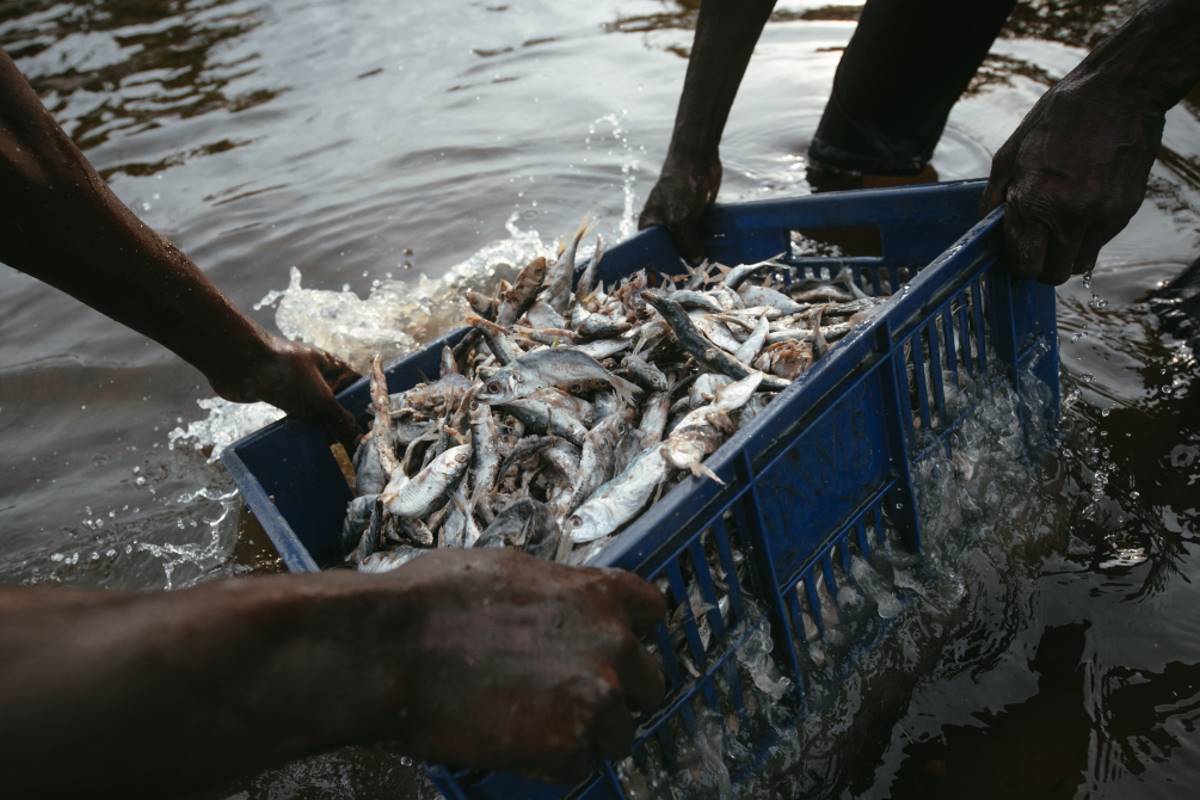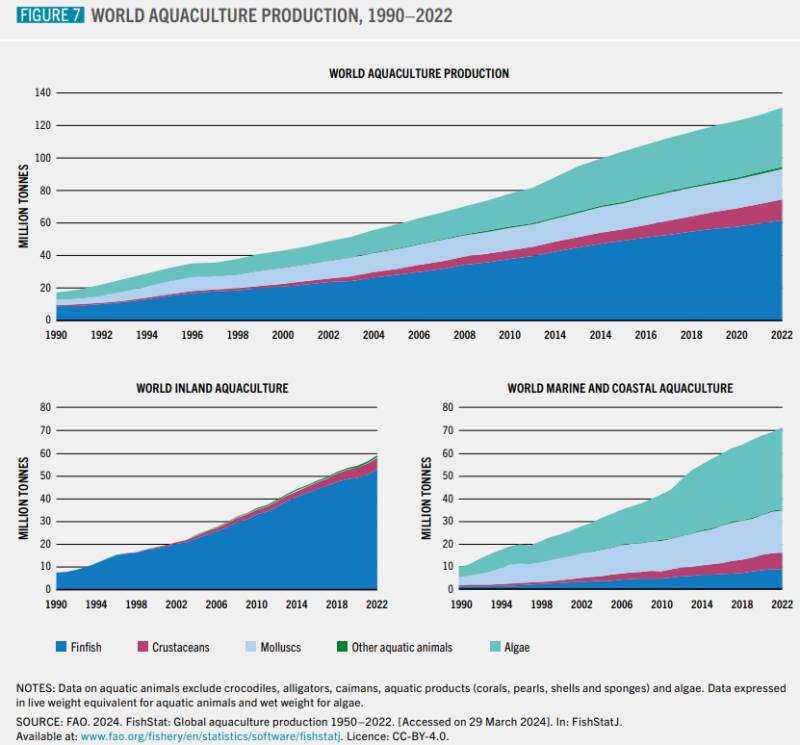Global fisheries and aquaculture production has set a new record, with the production of aquatic animals from the aquaculture sector surpassing capture fishing for the first time. This is what emerges from the new report published by the Food and Agriculture Organization of the United Nations

For the first time ever, we are farming more fish than we catch in the wild, while overfishing of wild stocks continues to rise, and the number of sustainably fished stocks decreases.
This is highlighted in the 2024 edition of the FAO report “The State of World Fisheries and Aquaculture 2024” (SOFIA). The report reveals that in 2022, global production reached a record high of 223.2 million metric tons, with aquaculture now representing 51% of this total. Specifically, 185.4 million metric tons of aquatic animals and 37.8 million metric tons of algae were produced.
FAO celebrates these significant milestones but emphasizes the need for further transformative and adaptive actions to enhance the efficiency, inclusivity, resilience, and sustainability of aquatic food systems. This is crucial for combating food insecurity, reducing poverty, and promoting sustainable governance, stated FAO Director-General QU Dongyu. Thus, the FAO is advocating for what it calls the Blue Transformation, aimed at achieving better production, nutrition, environment, and livelihoods for all, leaving no one behind.
Record aquaculture volumes in 2022
In 2022, aquaculture production exceeded wild fishing for the first time. Data shows that global aquaculture production reached an all-time high of 130.9 million metric tons, including 94.4 million metric tons of aquatic animals, making up 51% of total aquatic production.

A few countries dominate the aquaculture sector, with ten nations—China, Indonesia, India, Vietnam, Bangladesh, the Philippines, South Korea, Norway, Egypt, and Chile—accounting for more than 89.8% of the total production.
The Blue Transformation initiative aims to increase sustainable aquaculture by 35% by 2030, improve the sustainable management of capture fisheries, and develop aquatic food value chains.
How sustainable is aquaculture?
The European Food Safety Authority (EFSA) recently evaluated the status of intensive fish farming and the safety of commonly consumed species in the European Union and the European Economic Area.
While many farmed fish show no signs of parasites that could infect humans, there are still some farms where parasites like Anisakis have been found, posing a public health risk. These parasites are particularly present in fish raised in open cages offshore or in continuously flowing ponds, notably affecting European sea bass, Atlantic bluefin tuna, cod, and tench.
The issues with fish farming extend beyond food safety to include environmental and ethical sustainability concerns.
Mediterranean resources depleted by 2024
The Mediterranean Sea faces severe overfishing, with 58% of its fish stocks overexploited, making it the second most overfished sea in the world, compared to 37.7% of overfished stocks globally. This is compounded by other impacts on the marine ecosystem, primarily climate change.
European demand for seafood is extremely high, with the average European consuming about 53 pounds of fish annually, and Italians exceeding this average at 68.8 pounds per capita per year. The most affected species include hake, sardines, violet and pink shrimp, and red mullet. The situation is further exacerbated by illegal, unreported, and unregulated (IUU) fishing, which threatens marine ecosystems and local economies.
The climate crisis also jeopardizes half of the world’s fish production, with serious consequences for small fishing communities. Ocean warming is reducing fish populations, with some tropical areas potentially seeing a 40% decrease by 2100.
In the Mediterranean, climate change is causing effects like the tropicalization of the sea, with native species being displaced by rising temperatures, making room for invasive species (nearly 1,000 new invasive species, including 126 fish species, have entered the Mediterranean, leading to reductions in native species by up to 40% in some areas due to competition or predation). Other issues include jellyfish blooms driven by factors like marine eutrophication and declining fish stocks, and reduced CO2 storage capacity due to shrinking Posidonia oceanica meadows.
